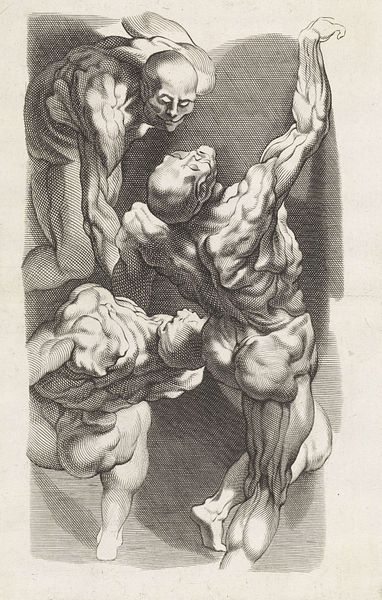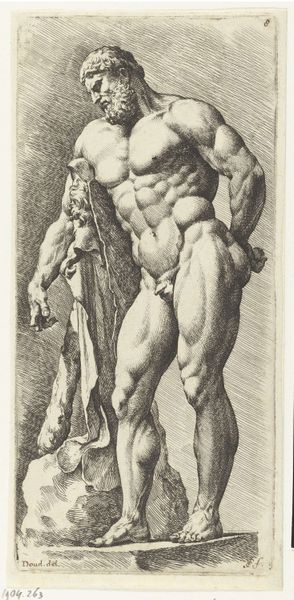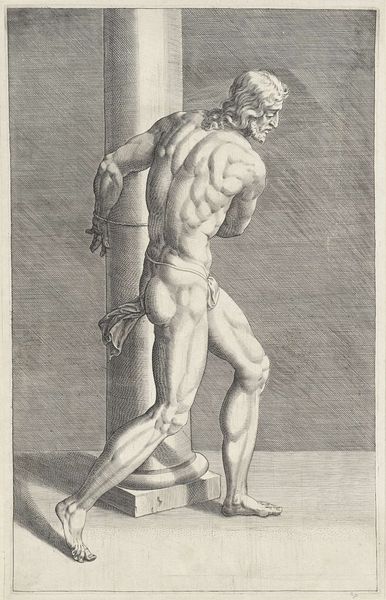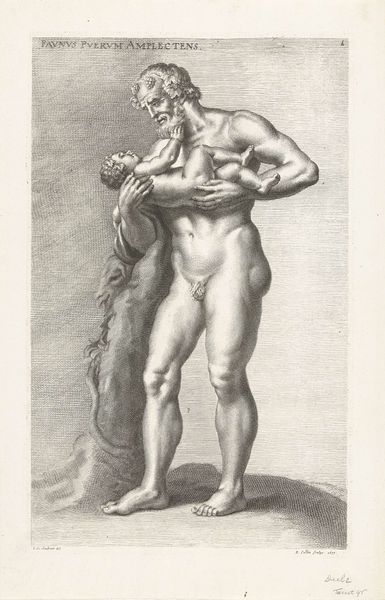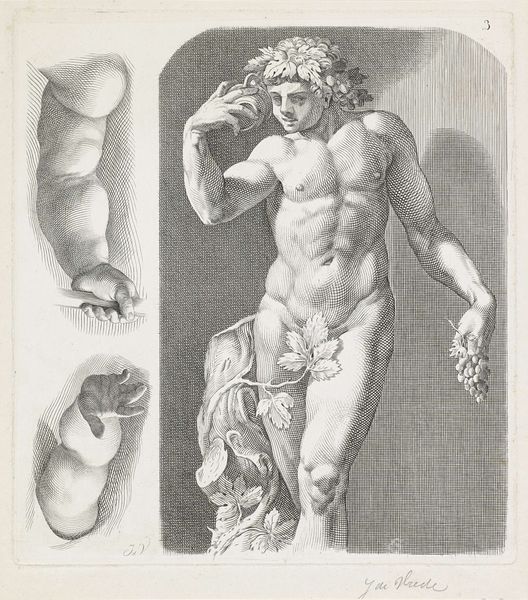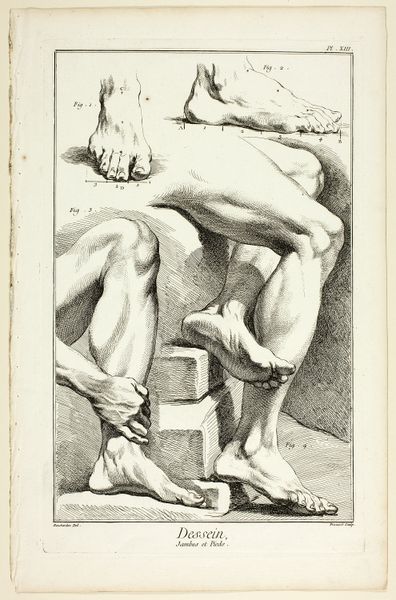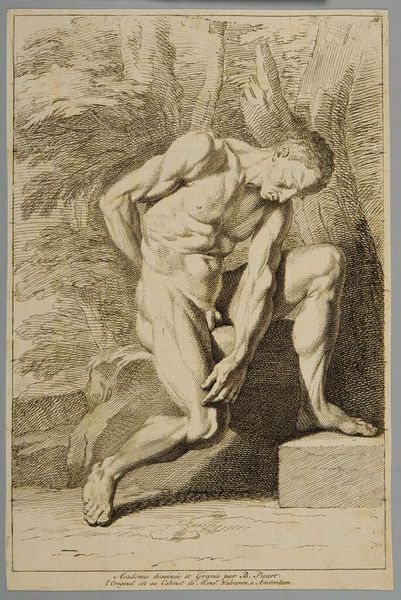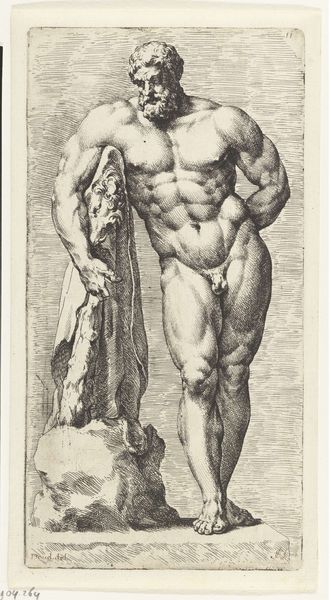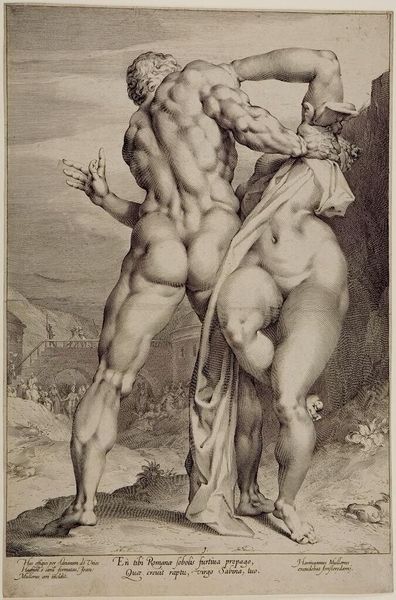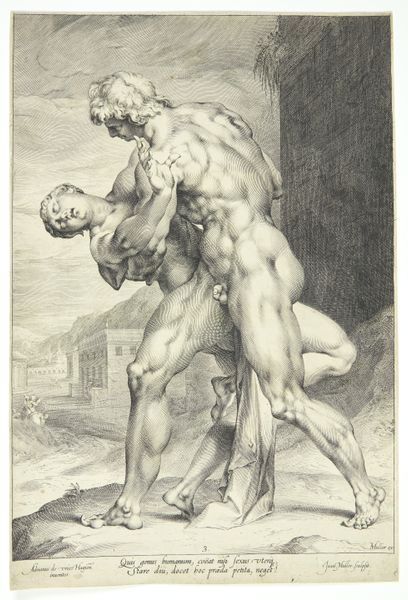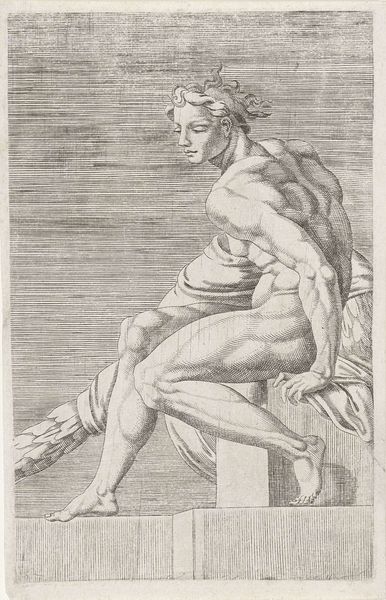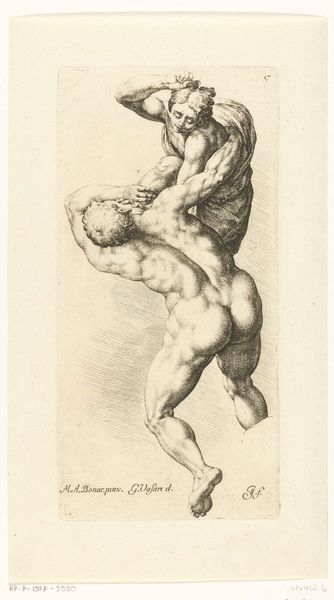
drawing, metal, engraving
#
pencil drawn
#
drawing
#
baroque
#
metal
#
charcoal drawing
#
figuration
#
pencil drawing
#
academic-art
#
engraving
#
arm
Dimensions: height 312 mm, width 204 mm
Copyright: Rijks Museum: Open Domain
Editor: Here we have "Two Anatomical Studies of Arms" by Paulus Pontius, created sometime between 1616 and 1657. It's a detailed engraving showing, well, exactly what the title says. I'm struck by the intensity of the rendering, all those cross-hatching lines building up the muscle. What do you see in this piece, especially considering its historical context? Curator: It's more than just meticulous rendering, wouldn't you agree? Consider the enduring power of the body as a symbol. What does the display of raw muscle evoke for you, across the centuries? This isn’t simply objective anatomy, but loaded. Editor: I see the raw muscle now... Power, definitely, and maybe a touch of the grotesque? It's quite confronting in its detail, not idealized at all. Curator: Precisely! The Baroque era often wrestled with intense contrasts. There’s a tension here – this meticulous dissection existing alongside this potential reading of immense strength. The image is also a symbol, a language that speaks beyond mere representation of muscle tissue. In Pontius' time, such studies weren’t just for scientific progress, were they? But the underlying structure reveals something deeper, don’t you think? Something lasting. Editor: You mean how it’s also a statement about humanity and mortality? That underlying structure… it's always there. So artistic expression carries meanings that are culturally driven, as a collective memory inscribed with symbols over time? Curator: Exactly. And the lasting power of this image resides not just in its skillful execution, but also in its echoing across cultural memory – connecting us to a past preoccupied with both strength and vulnerability. So this encoding of visual and cultural information enables the image to exist past its use for its own time. Editor: I hadn't thought about the strength and vulnerability being so intertwined. Looking at the artwork through that lens makes me appreciate it in a whole new way. Thank you! Curator: My pleasure. Every artistic work has a language; our role is only to discover how it speaks across time.
Comments
No comments
Be the first to comment and join the conversation on the ultimate creative platform.
